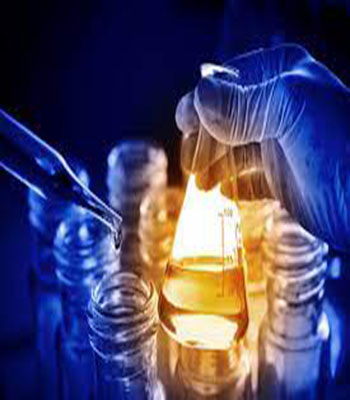Natural Gas Condensate
0,00 €The natural gas condensate is also called condensate, or gas condensate, or sometimes natural gasoline because it contains hydrocarbons within the gasoline boiling range, and is also referred to by the shortened name condy by many workers on gas installations.In general, gas condensate has a specific gravity ranging from 0.5 to 0.8, and is composed of hydrocarbons such as propane, butane, pentane, and hexane. Natural gas compounds with more than two carbon atoms exist as liquids at ambient temperatures
Natural Gas Condensate
0,00 €The natural gas condensate is also called condensate, or gas condensate, or sometimes natural gasoline because it contains hydrocarbons within the gasoline boiling range, and is also referred to by the shortened name condy by many workers on gas installations.In general, gas condensate has a specific gravity ranging from 0.5 to 0.8, and is composed of hydrocarbons such as propane, butane, pentane, and hexane. Natural gas compounds with more than two carbon atoms exist as liquids at ambient temperatures
Natural Gas Condensate
0,00 €The natural gas condensate is also called condensate, or gas condensate, or sometimes natural gasoline because it contains hydrocarbons within the gasoline boiling range, and is also referred to by the shortened name condy by many workers on gas installations.In general, gas condensate has a specific gravity ranging from 0.5 to 0.8, and is composed of hydrocarbons such as propane, butane, pentane, and hexane. Natural gas compounds with more than two carbon atoms exist as liquids at ambient temperatures
Nitrous oxide Gas
0,00 €- Nitrous oxide, commonly known as laughing gas, nitrous, nitro, or NOS is a chemical compound with the formula N2O. It is an oxide of nitrogen. At room temperature, it is a colourless, non-flammable gas, with a slightly sweet odour and taste. It is used in surgery and dentistry for its anaesthetic and analgesic effects. It is known as “laughing gas” due to the euphoric effects of inhaling it, a property that has led to its recreational use as a dissociative anaesthetic. It is also used as an oxidizer in the launching of rockets (= rocketry) and in motor racing to increase the power output of engines. At elevated temperatures, nitrous oxide is a powerful oxidizer similar to molecular oxygen.
- Nitrous oxide gives rise to NO (nitric oxide) on reaction with oxygen atoms, and this NO in turn reacts with ozone. As a result, it is the main naturally occurring regulator of stratospheric ozone. It is also a major greenhouse gas and air pollutant. Considered over a 100-year period, it has 298 times more impact per unit mass (global warming potential) than carbon dioxide.
- It is on the World Health Organization’s List of Essential Medicines, a list of the most important medications needed in a health system.
Nitrous oxide Gas
0,00 €- Nitrous oxide, commonly known as laughing gas, nitrous, nitro, or NOS is a chemical compound with the formula N2O. It is an oxide of nitrogen. At room temperature, it is a colourless, non-flammable gas, with a slightly sweet odour and taste. It is used in surgery and dentistry for its anaesthetic and analgesic effects. It is known as “laughing gas” due to the euphoric effects of inhaling it, a property that has led to its recreational use as a dissociative anaesthetic. It is also used as an oxidizer in the launching of rockets (= rocketry) and in motor racing to increase the power output of engines. At elevated temperatures, nitrous oxide is a powerful oxidizer similar to molecular oxygen.
- Nitrous oxide gives rise to NO (nitric oxide) on reaction with oxygen atoms, and this NO in turn reacts with ozone. As a result, it is the main naturally occurring regulator of stratospheric ozone. It is also a major greenhouse gas and air pollutant. Considered over a 100-year period, it has 298 times more impact per unit mass (global warming potential) than carbon dioxide.
- It is on the World Health Organization’s List of Essential Medicines, a list of the most important medications needed in a health system.
Nitrous oxide Gas
0,00 €- Nitrous oxide, commonly known as laughing gas, nitrous, nitro, or NOS is a chemical compound with the formula N2O. It is an oxide of nitrogen. At room temperature, it is a colourless, non-flammable gas, with a slightly sweet odour and taste. It is used in surgery and dentistry for its anaesthetic and analgesic effects. It is known as “laughing gas” due to the euphoric effects of inhaling it, a property that has led to its recreational use as a dissociative anaesthetic. It is also used as an oxidizer in the launching of rockets (= rocketry) and in motor racing to increase the power output of engines. At elevated temperatures, nitrous oxide is a powerful oxidizer similar to molecular oxygen.
- Nitrous oxide gives rise to NO (nitric oxide) on reaction with oxygen atoms, and this NO in turn reacts with ozone. As a result, it is the main naturally occurring regulator of stratospheric ozone. It is also a major greenhouse gas and air pollutant. Considered over a 100-year period, it has 298 times more impact per unit mass (global warming potential) than carbon dioxide.
- It is on the World Health Organization’s List of Essential Medicines, a list of the most important medications needed in a health system.
propane Gas
0,00 €Propane is a three-carbon alkane with the molecular formula C3H8, normally a gas, but compressible to a transportable liquid. A by-product of natural gas processing and petroleum refining, it is commonly used as a fuel for engines, oxy-gas torches, barbecues, portable stoves, and residential central heating. Propane is one of a group of liquefied petroleum gases (LP gases). The others include butane, propylene, butadiene, butylene, isobutylene and mixtures thereof.
propane Gas
0,00 €Propane is a three-carbon alkane with the molecular formula C3H8, normally a gas, but compressible to a transportable liquid. A by-product of natural gas processing and petroleum refining, it is commonly used as a fuel for engines, oxy-gas torches, barbecues, portable stoves, and residential central heating. Propane is one of a group of liquefied petroleum gases (LP gases). The others include butane, propylene, butadiene, butylene, isobutylene and mixtures thereof.
propane Gas
0,00 €Propane is a three-carbon alkane with the molecular formula C3H8, normally a gas, but compressible to a transportable liquid. A by-product of natural gas processing and petroleum refining, it is commonly used as a fuel for engines, oxy-gas torches, barbecues, portable stoves, and residential central heating. Propane is one of a group of liquefied petroleum gases (LP gases). The others include butane, propylene, butadiene, butylene, isobutylene and mixtures thereof.
Propane Specification
0,00 €The product propane specifications are as follows:
| Composition | |
|---|---|
| Ethane content | 2.0 liquid volume % (max.) |
| Propane content | 96 liquid volume % (min.) |
| Quality | |
| Vapor pressure at 100 ºF | 200 psig (max.) |
| Volatile residue temp. at 95% evaporation | 37 ºF (max.) |
| Butane and heavier | 2.5 % liquid volume % (max.) |
| Residue on evap. of 100 cm3 | 0.04 cm3 (max.) |
| Oil stain observation | pass |
| Corrosion, copper strip | No. 1 |
| Impurities | |
| Total sulfur | 0.001 wt % (max.) |
| Hydrogen Sulfide | negative |
| Moisture | 1 ppmv |
Propane Specification
0,00 €The product propane specifications are as follows:
| Composition | |
|---|---|
| Ethane content | 2.0 liquid volume % (max.) |
| Propane content | 96 liquid volume % (min.) |
| Quality | |
| Vapor pressure at 100 ºF | 200 psig (max.) |
| Volatile residue temp. at 95% evaporation | 37 ºF (max.) |
| Butane and heavier | 2.5 % liquid volume % (max.) |
| Residue on evap. of 100 cm3 | 0.04 cm3 (max.) |
| Oil stain observation | pass |
| Corrosion, copper strip | No. 1 |
| Impurities | |
| Total sulfur | 0.001 wt % (max.) |
| Hydrogen Sulfide | negative |
| Moisture | 1 ppmv |
Propane Specification
0,00 €The product propane specifications are as follows:
| Composition | |
|---|---|
| Ethane content | 2.0 liquid volume % (max.) |
| Propane content | 96 liquid volume % (min.) |
| Quality | |
| Vapor pressure at 100 ºF | 200 psig (max.) |
| Volatile residue temp. at 95% evaporation | 37 ºF (max.) |
| Butane and heavier | 2.5 % liquid volume % (max.) |
| Residue on evap. of 100 cm3 | 0.04 cm3 (max.) |
| Oil stain observation | pass |
| Corrosion, copper strip | No. 1 |
| Impurities | |
| Total sulfur | 0.001 wt % (max.) |
| Hydrogen Sulfide | negative |
| Moisture | 1 ppmv |










